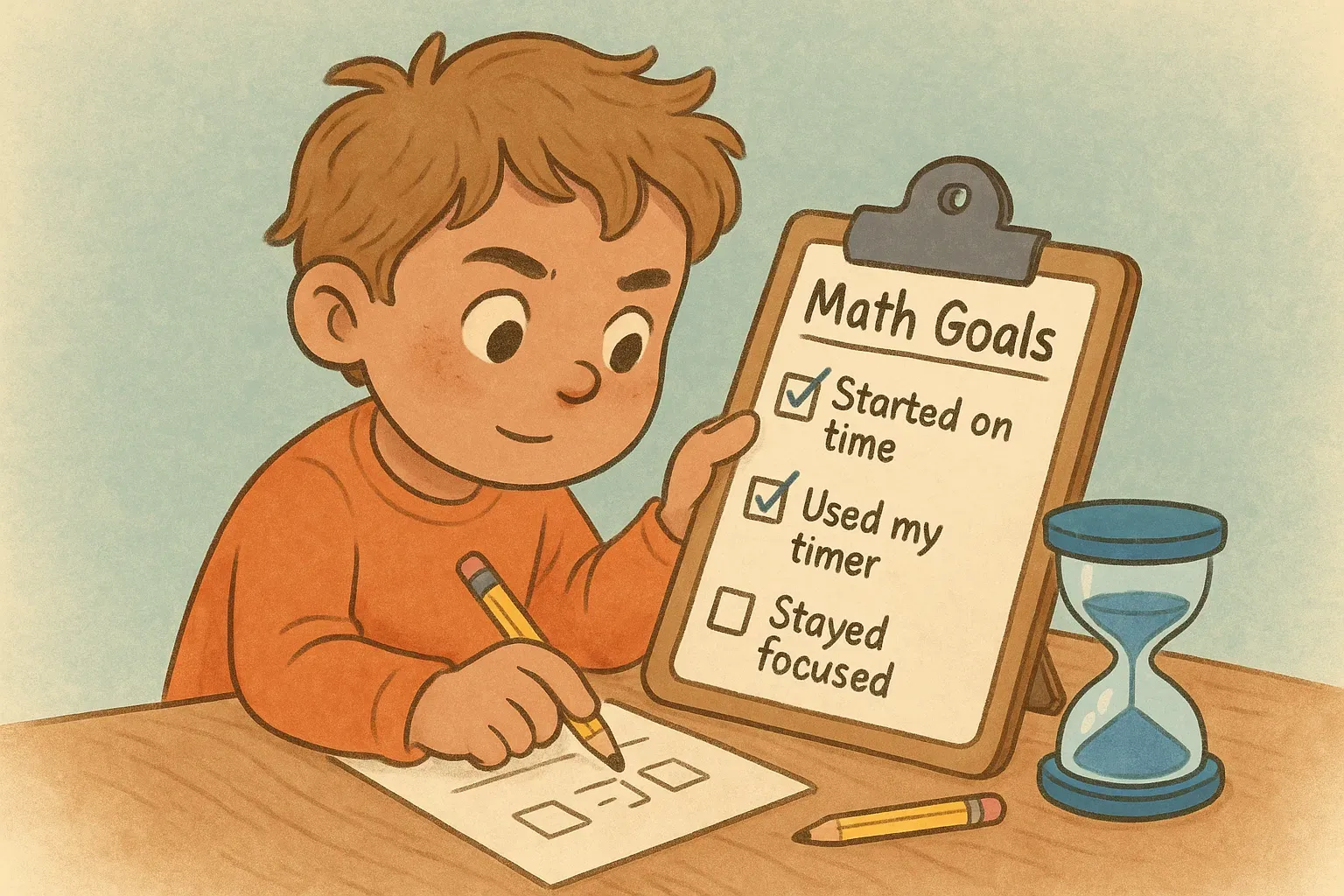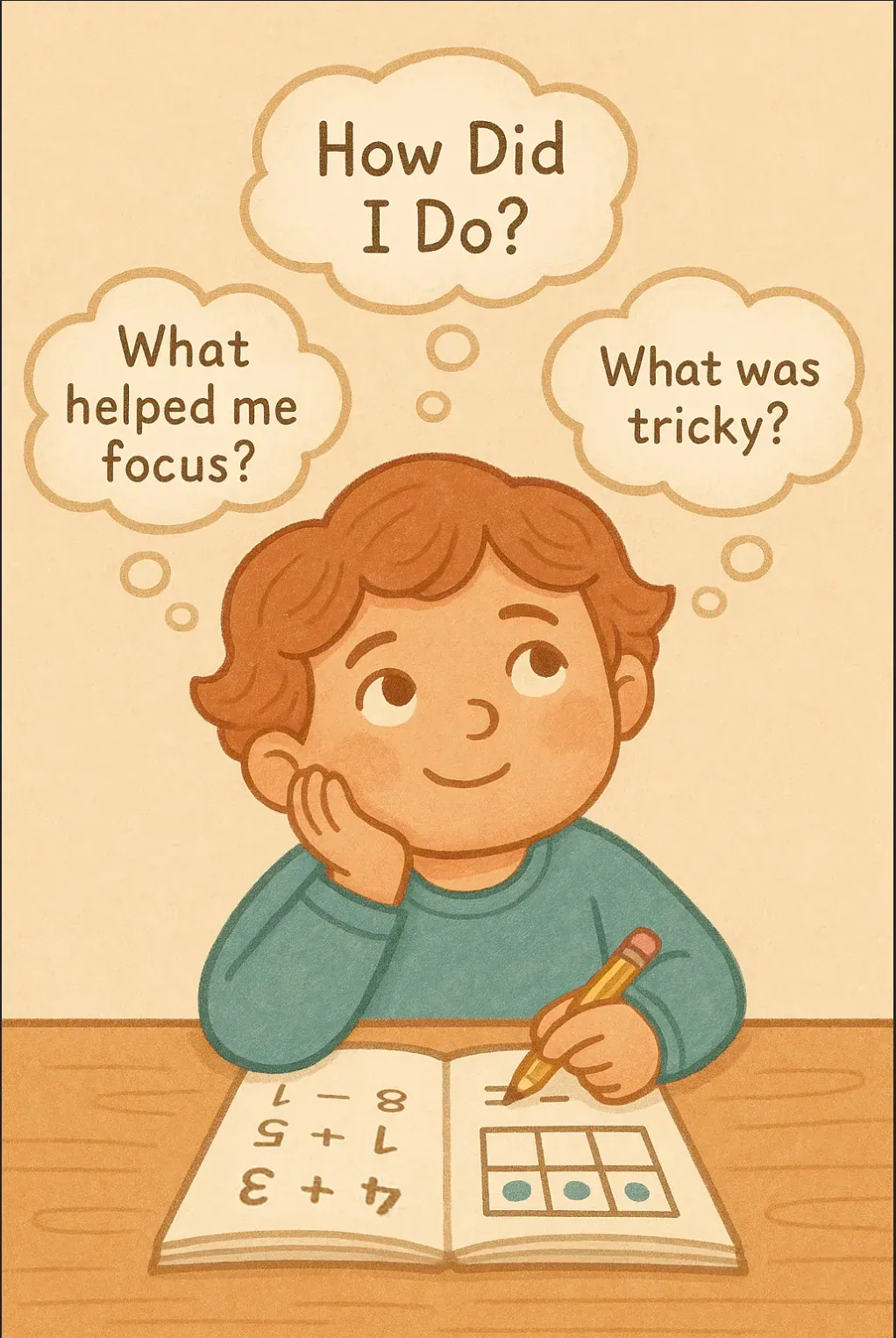Goal‑Setting & Self‑Monitoring Hacks for Young Mathematicians with ADHD
TL;DR
Help your child with ADHD excel in math by using goal-setting and self-monitoring strategies. Set small, achievable goals, use checklists to track progress, and encourage self-reflection. These research-backed techniques can boost confidence and improve math performance. Learn how to implement them at home with our easy-to-follow guide.
Introduction
Mathematics can be a daunting subject for many children, but for those with Attention Deficit Hyperactivity Disorder (ADHD), it can feel particularly overwhelming. Challenges with focus, organization, and working memory often make math tasks seem insurmountable. Fortunately, goal-setting and self-monitoring strategies offer practical ways to support children aged 5-10 in building confidence and improving their math skills. These techniques are not only effective for children with ADHD but can also benefit all young learners. In this blog post, we’ll explore what goal-setting and self-monitoring are, why they work, and how parents can implement them at home to help their child thrive in math.
Understanding Goal-Setting and Self-Monitoring
Goal-Setting: This involves creating specific, measurable objectives that your child aims to achieve in math. Goals should follow the SMART framework - Specific, Measurable, Achievable, Relevant, and Time-bound. For example, “Complete 5 math problems correctly each day” is a clear, trackable goal that provides direction and motivation.
Self-Monitoring: This is the process where children observe and record their own behavior or performance. It fosters self-awareness and independence by encouraging kids to track their progress, such as checking off completed tasks on a checklist or noting how many problems they solved correctly. Self-monitoring can be supported with simple tools like charts, checklists, or digital apps.
Why These Strategies Are Effective for Children with ADHD
Children with ADHD often face difficulties with executive functions, such as planning, organizing, and sustaining attention, which are essential for mastering math concepts. Goal-setting helps by breaking complex tasks into smaller, manageable steps, reducing the cognitive load and making math feel less intimidating. Self-monitoring empowers children to take ownership of their learning, increasing motivation and self-efficacy.
Research supports the effectiveness of these strategies. A study published in the Journal of Attention Disorders found that combining goal-setting with self-monitoring significantly improved academic performance in college students with ADHD [Self-Monitoring Study]. While this study focused on older students, the principles are adaptable for younger children. Additionally, a systematic review highlighted a negative association between ADHD symptoms and mathematical ability, emphasizing the need for targeted interventions like these [ADHD and Math Ability].
Practical Strategies for Parents

Parents can use the following research-backed strategies to help their children with ADHD succeed in math. Each strategy is designed to be simple, engaging, and adaptable for children aged 5-10, with or without ADHD.
- Set SMART Goals: Work with your child to create Specific, Measurable, Achievable, Relevant, and Time-bound goals. For example, “Solve 3 addition problems correctly by Friday” is a clear goal that provides focus and a sense of accomplishment.
- Use Checklists: Create a daily checklist for math homework or practice problems. Your child can check off each task as they complete it, reinforcing progress and providing a visual sense of achievement.
- Implement a Reward System: Offer small rewards for meeting goals, such as extra playtime or a favorite snack. This can motivate your child to stay engaged and persist through challenges.
- Use Timers: Set a timer for math sessions to help your child focus for short periods. Start with 5-10 minutes and gradually increase the duration as they build stamina.
- Encourage Self-Reflection: After each math session, ask your child to reflect on what went well and what they can improve. Questions like “What helped you solve that problem?” build metacognitive skills.
- Visualize Progress: Use charts or graphs to display your child’s progress over time. For example, a sticker chart for completed math tasks can be motivating and show how far they’ve come.
Examples in Action
Here’s how these strategies can be applied in real-life scenarios:
Scenario | Strategy Used | How to Apply |
|---|---|---|
Child struggles to start math homework. | Set SMART Goals | Set a goal like “Complete 4 math problems before a 5-minute break.” Write it down and review it together. |
Child loses focus during math practice. | Use Timers | Set a 5-minute timer for focused math work, followed by a short break. Gradually increase the time. |
Child feels discouraged after making mistakes. | Encourage Self-Reflection | Ask, “What did you learn from this mistake?” to turn errors into learning opportunities. |

How to Implement These Strategies
To make these strategies effective, parents should follow these steps:
- Start Small: Begin with one or two strategies to avoid overwhelming your child. For example, start with setting a daily goal and using a checklist.
- Be Consistent: Use the strategies regularly to build habits. Consistency is crucial for children with ADHD, who thrive on routine.
- Involve Your Child: Let your child have a say in setting goals and choosing rewards. This increases their motivation and sense of ownership.
- Monitor and Adjust: Regularly review the goals and strategies with your child. Adjust them based on their progress and feedback to ensure they remain effective.
For children with ADHD, short, engaging sessions are key. Incorporate hands-on tools like blocks or digital apps to maintain interest, and celebrate small successes to build confidence.
Research Support
The effectiveness of goal-setting and self-monitoring is grounded in research. The Journal of Attention Disorders study demonstrated that students who used these strategies showed improvements in ADHD symptoms, academic behavior, and goal attainment [Self-Monitoring Study]. While conducted with college students, the principles of breaking tasks into goals and tracking progress are applicable to younger children. The BMC Medicine review further underscores the challenges children with ADHD face in math, highlighting the importance of structured interventions [ADHD and Math Ability].
📌 Pin this: Step-by-Step ADHD Math Roadmap
FAQ
Q: How young can I start teaching goal-setting and self-monitoring to my child?
A: Children as young as 5-6 years old can begin learning these skills with parental guidance. Use simple, visual aids like sticker charts to make it age-appropriate.
Q: What if my child forgets to use the checklist or monitor themselves?
A: Forgetting is common, especially initially. Gently remind them and provide positive reinforcement when they remember. Over time, they’ll develop the habit with practice.
Q: Are these strategies only for children with ADHD?
A: No, these strategies benefit all children by fostering organization and independence. They’re particularly helpful for those with ADHD who need extra support with focus and planning.
Q: Where can I find additional resources?
A: Consult your child’s teacher or a psychologist for personalized advice. Websites like the CDC’s ADHD page offer tips for supporting children in academic settings.
Conclusion
Goal-setting and self-monitoring are powerful tools to help children with ADHD succeed in math. By setting clear goals, using checklists, and encouraging self-reflection, parents can empower their children to take control of their learning, build confidence, and achieve success. These strategies are flexible, research-backed, and beneficial for all young learners. Start small, stay consistent, and celebrate every step forward on your child’s math journey.
🚀 Want to Take the Next Step? Try Monster Math.
Doing Worksheets with timers and goals can help - but wouldn't it be even better if the math work itself becomes more fun?
That’s exactly why we created Monster Math:
- 🎮 A math app that’s built like a real game, not just game wrapping a worksheet
- 👾 Filled with adaptive levels and kid-approved monsters.
- 📊 Aligned with curriculum standards, but designed for ADHD attention spans.
Whether your child is practicing number bonds or battling boss monsters, Monster Math helps them feel successful—and actually enjoy math.
👉 Try it FREE at www.monstermath.app
References
- Scheithauer, M. C., & Kelley, M. L. (2015). Self-Monitoring by College Students With ADHD: The Impact on Academic Performance. Journal of Attention Disorders, 21(14), 1177–1186. [Self-Monitoring Study]
- Raghib, M., Tosto, M. G., Asherson, P., & Paris, A. G. (2015). A systematic review of attention deficit hyperactivity disorder (ADHD) and mathematical ability: current findings and future implications. BMC Medicine, 13, 204. [ADHD and Math Ability]

